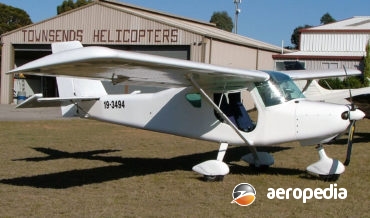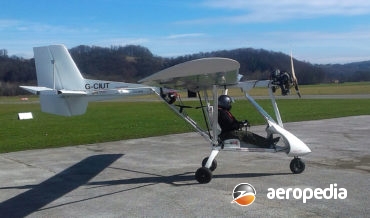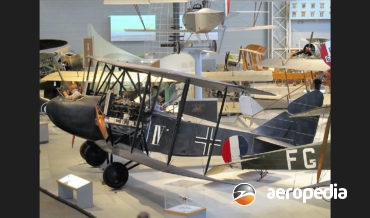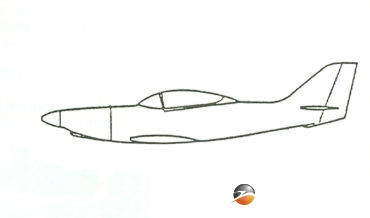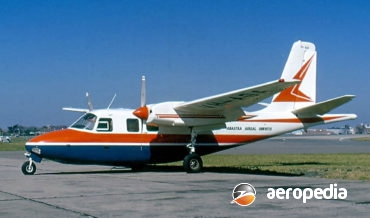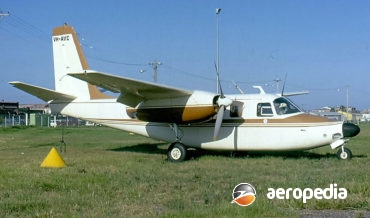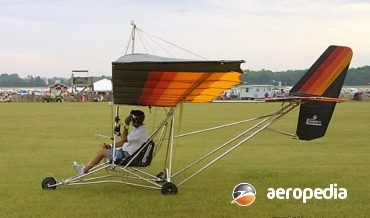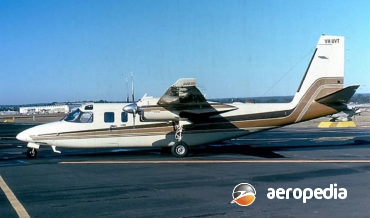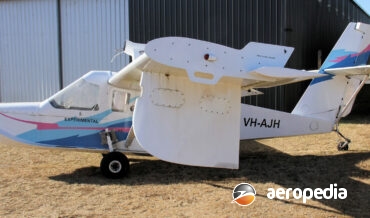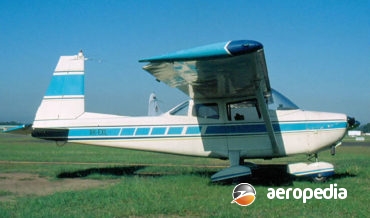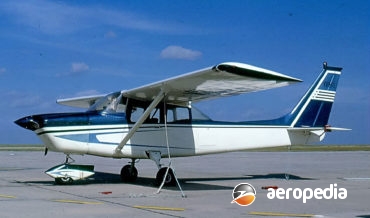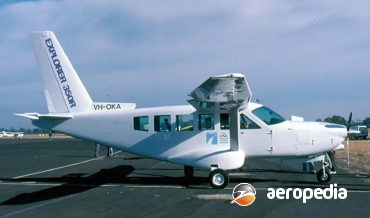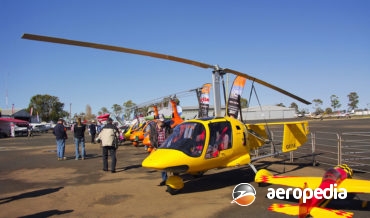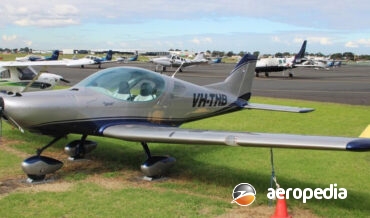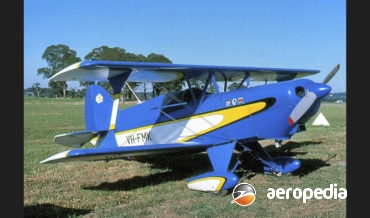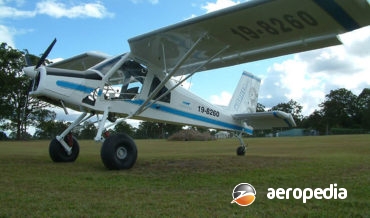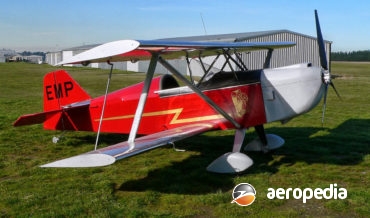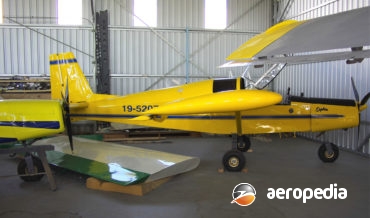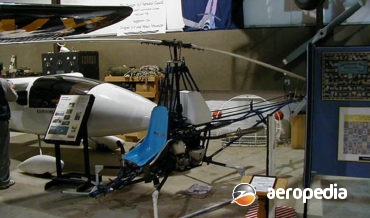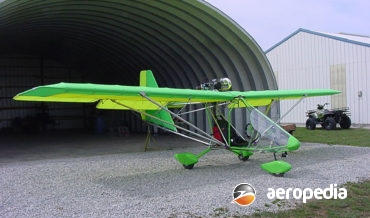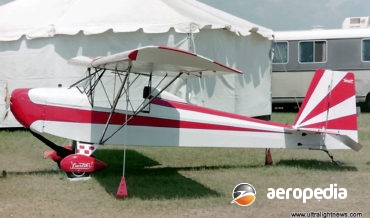All Contents
Contents
The Pegasus is a composite light aircraft designed by Ivan Celso de Castilho in Brazil. The prototype first flew in 1992 and, after four years of testing, a production facility known as Aerodesign Desenvolvimentos Aeronauticos Ltd was set up to build the type, which became known as the Pegasus Silver
David C. Eyre
- May 8, 2019
The Solo is one of a series of aircraft developed in Bulgaria by Aeroplanes Dar, the Company having been established in 1917 by the King of Bulgaria, King Ferdinand, as a workshop for what was to become the Country’s National Air Force.
David C. Eyre
- May 8, 2019
The prototype of the turbine powered series of Rockwell Commanders was flown for the first time on 31 December 1964. Known as the Model 680T Turbo Commander, it was powered by 451-kw (605-shp) Garrett AiResearch turboprops.
David C. Eyre
- May 8, 2019
The G.IV was designed and developed by Allgemeine Elektrizitats Gessellschaft [AEG] at a similar time to the Friedrichshafen and Gotha bombers and used the same engines but had a performance inferior to those aircraft
David C. Eyre
- May 8, 2019
In the early 1980s a company known as Aero Composite of Bankstown, NSW announced through the magazine Airsport that it was proposing to build a “home-built: aircraft, the object being to produce the basic aircraft components as a kit of parts such that amateur builders could produce a high performance
David C. Eyre
- May 8, 2019
The Swift started lift as a lightweight foot-launched tailless glider with rigid wings and was designed in California in the United States but has been manufactured by Aeriane, a Company based at Gembloux in Belgium and was initially built under licence but later the Belgian concern became the sole manufacturer.
David C. Eyre
- May 8, 2019
The Pulsar was produced by Aero Design Inc, of San Antonio Texas, and was a derivative of the company’s Star-lite which won the EAA Outstanding New Design Award in 1983. In more recent times the type has been marketed by SkyStar Aircraft Corp of Caldwell, Indiana as the Pulsar III.
David C. Eyre
- May 8, 2019
The Super Aero 45 and Aero 145 were progressive developments of the Aero 45 light twin which flew for the first time in prototype form on 21 July 1947 in Czechoslovakia. It was the Country’s first post-war aviation product and was very successful.
David C. Eyre
- May 8, 2019
The Sea Hawk was designed by Garry LeGare in Canada, it being an all-composite amphibious biplane which, depending on the power plant installed, can seat two adults, up to three adults, or two adults and two children.
David C. Eyre
- May 8, 2019
The AT-3 was designed and developed in Poland by Aero Sp of Warsaw as a light two-seat sporting aircraft of all metal construction. Derived from the Pottier P220 it can be fitted with variants of the Rotax 912 series of four-cylinder engines, or the Limbach L2400 series.
David C. Eyre
- May 8, 2019
Aero Kros is a Polish company producing light aircraft for the European market and this machine was designed to comply with Federation Aeronautique Internationale microlight regulations and US light sport aircraft regulations.
David C. Eyre
- May 8, 2019
Aero Design and Engineering Co, which was formed in December 1944 in Culver City, California, by two Former Douglas Aircraft Co employees, produced an aircraft known as the Aero Commander L-3805.
David C. Eyre
- May 8, 2019
The TC.2 was designed and developed in the early 1980s by Aero Mirage Inc of Gainesville, Florida as a high-performance super-clean conventional design with non-critical, quickly removal wings.
David C. Eyre
- May 8, 2019
After production of the initial version of the Aero Commander series stopped, the Models 520 and 560 appeared in 1954, powered by two 209-kw (280-hp) Lycoming GO-480-B engines. These introduced a few degrees of sweep angle on the vertical tail surfaces.
David C. Eyre
- May 8, 2019
In 1955 the Commander 680 Super was introduced to the Aero Commander range and some 295 were built between 1955 and 1958. Two aircraft were supplied to the USAF as the U-4B, four to the US Army as the U-9C, and two to the latter service; with side-looking radar, known
David C. Eyre
- May 8, 2019
The Cobra was a high-wing, wire-braced ultra-light monoplane produced in the United States and marketed in Australia by Ultralight Flying Machines of North Balwyn, VIC,being able to meet ANO 95.10 regulations.
David C. Eyre
- May 8, 2019
The Aero Commander 840, also known as the Rockwell Commander 690C Jetprop 840, is a development of the 690 series with turboprops, being produced alongside the 980 at Rockwell International’s General Aviation Division, at this time the company concluding production of piston-engined aircraft.
David C. Eyre
- May 8, 2019
The Adventurer 333 was designed and marketed as a light amphibious monoplane with a flying-boat hull and available in kit form, a number of examples being sold around the world before the manufacturer ceased production.
David C. Eyre
- May 8, 2019
This series of aircraft was developed by Volaircraft Corporation in the United States during the late 1950s. At first it was marketed as the Volair 10, receiving its type approval on 30 November 1961.
David C. Eyre
- May 8, 2019
The Explorer 500T and 750T are developments of the AEAR Explorer 350 which was designed and built in Western Australia by Aeronautical Engineers Australia Research Pty Ltd and which when first completed and registered became VH-OKA (c/n 350-001) on 15 December 1997.
David C. Eyre
- May 8, 2019
As noted with the Darter Commander, in May 1968 a redesign of this series of aircraft took place and a new model known as the Model 100/180 Lark Commander was released onto the market.
David C. Eyre
- May 8, 2019
The Explorer was an Australian entry into the light utility transport market, the prototype Explorer 350R being designed by Australian Aeronautical Engineers (AEA) Pty Ltd at Jandakot, WA.
David C. Eyre
- May 8, 2019
This model had a max take-off weight of 800 kg (1,764 lb), engines up to 134-kw (180-hp) may be installed and fuel capacity was increased to 120 litres (26.4 Imp gals).
David C. Eyre
- May 8, 2019
The Xenon was developed in France in 2005 and is a factory built and delivered fully-assembled gyrocopter produced by ABS Aerolight in France with a variety of Rotax aircraft engines.
David C. Eyre
- May 8, 2019
Over the years Australian Aircraft Kits of Taree, NSW has carried out a lot of research and development work relating to slow speed flying of fixed wing aircraft, particularly light aircraft designed to operate from short airstrips on private properties.
David C. Eyre
- May 8, 2019
The Stingray was a mid-wing fully cantilevered light sporting aircraft with a pylon mounted pusher engine designed by Mr Raymond Tolhurst and built in some numbers at the Camden facility of Composite Engineering in the 1980s.
David C. Eyre
- May 8, 2019
The Hornet was designed by Ole Hartman of Australian Aircraft Kits as a large roomy short-take-off and landing light sporting aircraft suitable for manufacture by the amateur builder. With a large luggage space, and good cross-country performance, it became available in 2004 in kit form and is manufactured in the
David C. Eyre
- May 8, 2019
The Acro Sport was designed by the late Mr Paul Poberezny, President of the Experimental Aircraft Association of America, specifically for construction by persons with no experience in building aircraft.
David C. Eyre
- May 8, 2019
The aircraft was designed to meet Regulation 95-10, being a two-seater in tandem with an open cockpit or enclosed cockpit, as the customer wishes, but with the same responsive controls and handling of the larger aircraft. The cargo area can be used for a jump seat.
David C. Eyre
- May 8, 2019
In 1985 the Aircraft Spruce and Specialty Company sponsored the design and construction of a light aircraft, the goal being to develop a new homebuilt aircraft that could be easily constructed from plans and / or building instructions and using commonly available materials.
David C. Eyre
- May 8, 2019
The Wasp GT was designed by Ole Hartmann and introduced to the Australian Aircraft Kits range of amateur-built light aircraft early in the 21st century, the kits being available to purchasers from the company’s facility at Laurieton, NSW.
David C. Eyre
- May 8, 2019
In the 1950s Messrs T G Adams and Paul Wilson in California designed and developed a single-seat light sporting helicopter for private use. After a prototype was completed and tested, they produced plans for construction of the machine, then known as the Adams Wilson Hobbycopter, for sale to amateur constructors.
David C. Eyre
- May 8, 2019
The Aerolite light aircraft series was constructed and marketed in the early 1990s by Australian Aviation Works of Donvale, VIC, the prototype being placed on display at the Australian International Airshow at Avalon.
David C. Eyre
- May 8, 2019
This light single-seat helicopter was built in the Melbourne suburb of Black Rock and is believed to have been completed in about 1948. It took about two-years to complete and is thought to be, if not the first, one of the first helicopters designed and built in Australia.
David C. Eyre
- May 8, 2019
The J-3 Kitten was one of a series of light aircraft produced by AAW [Australian Aircraft Works] at Donvale, VIC, under licence from the Anglin Aircraft Company in the US, being a high-wing strut braced monoplane of conventional light aircraft appearance, the other designs being the J-4 Sportster, the J-5
David C. Eyre
- May 8, 2019
Over the years the Buccaneer has been produced by a number of companies and in a variety of models, one name being given to it at one stage being the Mallard. It is a single or two-seat light amphibian with an engine in the pusher configuration and has been marketed
David C. Eyre
- May 8, 2019
The J-4 Sportster was designed by Jessie Anglin in the United States and produced by the Anglin Aircraft Company, making its first flight in 1986.
David C. Eyre
- May 8, 2019
The J6 Karatoo is one of a range of ultra-light aircraft imported by the Australian Aircraft Works [AAW] of Donvale, VIC from Grover Aircraft in Hendersonville, North Carolina, USA.
David C. Eyre
- May 8, 2019
The Seastar was designed and built by AAC Amphibian Airplanes of Squamish, British Colombia, as a light two-seat amphibious biplane for sporting use.
David C. Eyre
- May 8, 2019
Australian Aircraft Works of Donvale, VIC has been involved in the construction of ultra-light aircraft in kit form for some years.
David C. Eyre
- May 8, 2019
Recent Comments
Archives
Categories
- No categories
Categories
- No categories
Latest Posts
Newsletter

